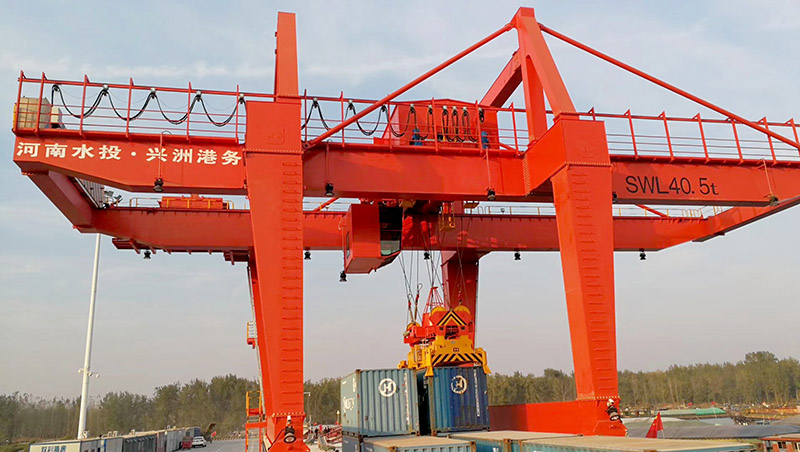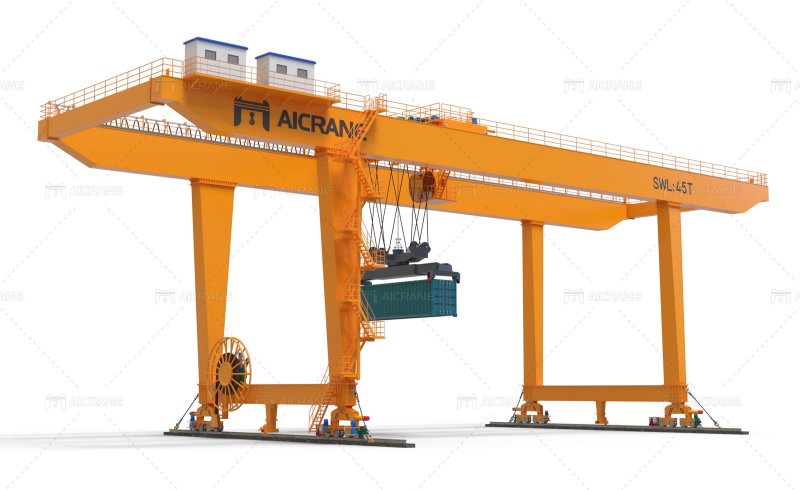In the fast-paced world of international trade and global commerce, the efficient handling of cargo, particularly shipping containers, is of paramount importance. Containerization revolutionized the logistics industry, and container gantry cranes have become the unsung heroes of modern port operations. These massive machines play a crucial role in the global supply chain, ensuring the swift and efficient transfer of goods between ships, trucks, and trains. In this article, we’ll explore the significance of container gantry cranes and how they enable the efficient handling of global trade.
Containerization: The Backbone of Modern Trade
Before the advent of containerization, cargo handling in ports was a labor-intensive and time-consuming process. Goods were loaded and unloaded individually, leading to extensive delays, increased labor costs, and higher risks of damage or pilferage. However, the introduction of standardized shipping containers in the mid-20th century revolutionized the industry. These large metal boxes, also known as TEUs (twenty-foot equivalent units) or FEUs (forty-foot equivalent units), provided a standardized and secure means of transporting a wide range of products.

Containerization has several key advantages, including:
Efficiency: Containers are pre-loaded and sealed at the point of origin, making handling in ports more efficient and reducing the time ships spend in port.
Security: Sealed containers are tamper-proof and reduce the risk of theft and damage during transport.
Intermodal Compatibility: Containers can seamlessly transfer between ships, trucks, and trains, making them an ideal choice for global trade.
Container Gantry Cranes: The Workhorses of Ports
Container gantry cranes, commonly referred to as container cranes or ship-to-shore cranes, are the heart of container terminals and are responsible for moving containers between ships and other transportation modes. These massive machines are essential for maximizing the advantages of containerization. Here are some key aspects of their operation:
Lifting Capacity: Container gantry cranes are designed to handle a wide range of container sizes and weights, from standard 20-foot and 40-foot containers to specialized containers. Their lifting capacity often exceeds 100 tons, enabling them to handle oversized or heavy cargo.
Reach and Flexibility: With their tall structures and long booms, these cranes can reach over a ship’s deck to access containers stacked several rows deep. Their ability to move horizontally along the quay and vertically to different container levels provides unmatched flexibility.
Precision Control: Skilled operators in the crane’s cabin control every movement with precision. They carefully load and unload containers, ensuring they are placed securely and safely.

Efficiency in Action
Container gantry cranes bring remarkable efficiency to port operations in several ways:
Rapid Turnaround: One of the most critical aspects of port efficiency is the speed at which cargo is loaded and unloaded. Container gantry cranes can swiftly transfer containers between ships and transport vehicles, significantly reducing turnaround times.
Reduction in Labor Costs: Automation features, such as remote operation and computer-assisted controls, minimize the need for extensive manual labor, which in turn lowers costs and increases overall efficiency.
Space Optimization: Gantry cranes can stack containers in container yards with precision, making the most of available space. This means more containers can be stored and accessed in a smaller footprint.
24/7 Operations: Many modern ports operate round the clock, and container gantry cranes play a key role in enabling continuous, non-stop operations.
Innovations in Container Gantry Crane Technology
The container handling industry has seen significant advancements in gantry crane technology over the years. Some notable innovations include:
Automation: Automation has become a focal point in the industry. Automated stacking cranes (ASCs) work in tandem with gantry cranes to move containers within the yard autonomously. This not only increases efficiency but also reduces the risk of human error.
Remote Operation: Some gantry cranes can now be operated remotely from control centers, improving safety and allowing operators to handle multiple cranes simultaneously.
Electrification: As environmental concerns grow, many ports are transitioning to electric gantry cranes, reducing air and noise pollution while also lowering operational costs.
Data Integration: The integration of data and analytics allows for predictive maintenance and improved operational decision-making. Machine learning algorithms can help optimize container movements and reduce energy consumption.
Safety Measures and Best Practices
Safety is a paramount concern in the operation of container gantry cranes. Here are some key safety measures and best practices:
Training: Operators must undergo rigorous training and certification to ensure they can safely and efficiently control these massive machines.
Maintenance: Regular maintenance is critical to prevent equipment failure, which could lead to accidents or operational disruptions.
Load Monitoring: Advanced load monitoring systems ensure that containers are not overloaded or improperly secured during lifting and transport.
Weather Considerations: Gantry crane operations may be affected by adverse weather conditions. It’s important to have safety protocols in place to deal with wind, rain, or other environmental factors.
Sustainable Ports and Gantry Cranes
As the world becomes increasingly focused on sustainability, ports and container rail mounted gantry cranes are evolving to reduce their environmental footprint. Some steps toward sustainability include:
Electrification: Transitioning from diesel-powered cranes to electric ones significantly reduces emissions and noise pollution.
Renewable Energy: Ports are exploring the use of renewable energy sources, such as wind and solar power, to supply the electricity needed to operate gantry cranes.
Green Design: Modern gantry cranes are being designed with environmental considerations in mind, from the materials used to energy-efficient components.
Container gantry cranes are the unsung heroes of the global trade and logistics industry. These colossal machines have transformed the way goods are handled in ports, making international commerce more efficient and secure. Through continuous innovation, automation, and sustainability efforts, they are poised to play an even more crucial role in the future of global trade. As we move towards a world that demands greater efficiency, reduced environmental impact, and improved safety, container gantry cranes are sure to remain at the forefront of port operations, enabling the smooth flow of goods across the globe. If you are interested in knowing more about cranes, please just visit this website aicraneglobal.com.